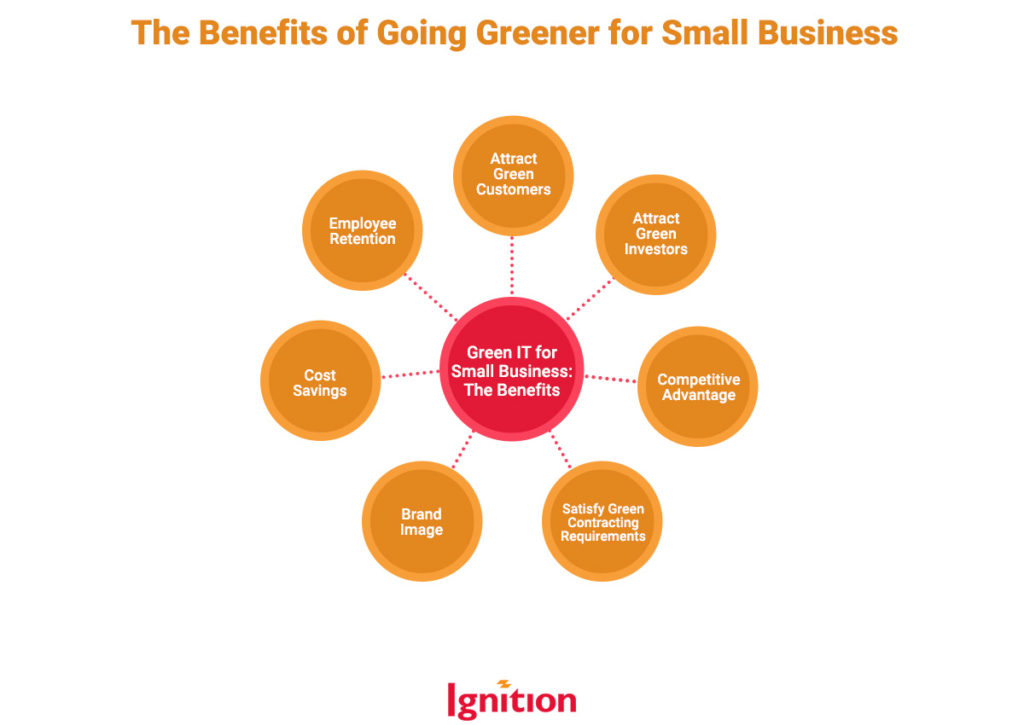Green IT might seem a bit paradoxical. Despite the popular image of IT enthusiasts being environmentally conscious, the industry isn’t exactly known for its eco-friendliness. Questionable manufacturing practices, high energy consumption, short product life cycles, piles of e-waste, and harmful heavy metals leaching into the environment – it’s far from pretty. However, if you’re striving for improvement, that’s a beautiful thing in itself.
If you’re a small company aiming to adopt greener practices, there’s plenty you can do to minimize your impact. Whether you want to make small adjustments or fully embrace the ethical world of BCorp, let’s explore some green IT initiatives tailor-made for small businesses.
Wait, I Don’t Have A Big Budget For Ethics
Let’s address a couple of concerns here.
Firstly, some green IT initiatives don’t have to cost you a fortune, figuratively or literally. You can make subtle changes to your business practices that won’t disrupt your budget, but the positive impact on the planet will be noteworthy.
Secondly, being environmentally responsible can be a significant competitive advantage for many small businesses. The “green dollar” is real, and customers are more willing to support eco-friendly businesses. Doing the right thing benefits the environment and makes good business sense. It’s just science — take a look:

Green IT Initiatives: Six Ways To Save The Planet Without Breaking Into A Rash
Making a positive impact on the planet doesn’t have to involve a trip to the allergist. Here are six simple yet effective ways to get started with green IT initiatives:
1. Manage Your Spares
Reduce, reuse, and recycle are crucial steps, so let’s begin by focusing on reducing waste.
Extend the lifespan of your devices to cut down on consumption and expenses.
To achieve this:
- Prioritize device maintenance and ensure you keep track of them.
- Implement mobile device management (MDM) to have complete oversight of your fleet through a centralized IT asset register (your MDM dashboard).
With MDM, you’ll know each device’s location, status, and age, allowing you to manage spares efficiently and reassign them as needed.
MDM also boosts security, reducing the chances of losing devices and avoiding unnecessary replacement costs. Be sure to establish a well-thought-out “How old is too old?” policy to determine when it’s time to bid farewell to an IT asset.
2. Speaking Of Proper Disposal
If your device suppliers offer end-of-asset-life recovery schemes or manufacturer take-back programs, take advantage of them. Otherwise, thoughtfully consider how to dispose of your old tech.
Here are some eco-conscious options:
- Look for authorized e-waste recycling programs with R2 or e-Steward accreditation.
- Contribute to narrowing the digital divide by donating usable tech to non-profit organizations.
- Explore local e-waste collection services.
Prioritize security during disposal by backing up data and either wiping the device yourself or hiring a professional data destruction company. Some e-recyclers offer additional measures to ensure no traces of your data remain on the device.
3. Opt For Energy-Efficient Devices
When purchasing new IT equipment, choose energy-efficient options. Look for devices, servers, and printers designed with power management, efficiency, high-quality components, and smart cooling features.
By opting for energy-efficient equipment, you’ll not only save on energy costs but also contribute to a greener planet. Keep an eye out for EPEAT certification, and observe how leading brands like Apple and Microsoft are taking steps towards sustainability.
4. Partner With Green Suppliers
As a small business, your influence can drive positive change. Align your IT procurement strategy with eco-friendliness by sourcing from suppliers with strong environmental standards and sustainable packaging practices. Encourage your suppliers to prioritize sustainability as well.
5. Embrace Green Energy
While green energy may have a higher initial cost, it’s a significant step toward a sustainable future. Fossil fuels are gradually being phased out, making green energy the way forward. Take advantage of green energy grants and incentives, such as those offered through the Clean Energy Accelerator, to make this transition smoother for your small business.
6. Cultivate a Sustainable Work Culture
Your company culture plays a vital role in promoting sustainability. Encourage small but impactful changes in behavior among your employees, including:
- Turning off devices when not in use.
- Embracing digital information sharing instead of unnecessary printing.
- Using printing only as a last resort.
- Responsible maintenance of corporate devices.
By instilling a culture of sustainability, your entire team can contribute to reducing your ecological footprint.
Remember, every step, no matter how small, matters. Implementing these green IT initiatives will not only benefit the environment but also enhance your brand’s reputation and attract eco-conscious customers.
Feel Like Embiggening Your Greenness?
Adding any of the above to your green IT strategy is a small but perfectly-formed step forward. Remote working and migrating your business to the cloud are bigger, chunkier green IT strategies because then it’s not just your IT that’s greener, it’s your whole business. Even a little curious? Tell us how you work, and we’ll tell you how to get the biggest, greenest bang for your dollar.
Ignition is Silicon Valley’s best (and friendliest) IT security, compliance, and support team. Contact us now – chatting about IT support and cybersecurity is our favorite thing to do!

